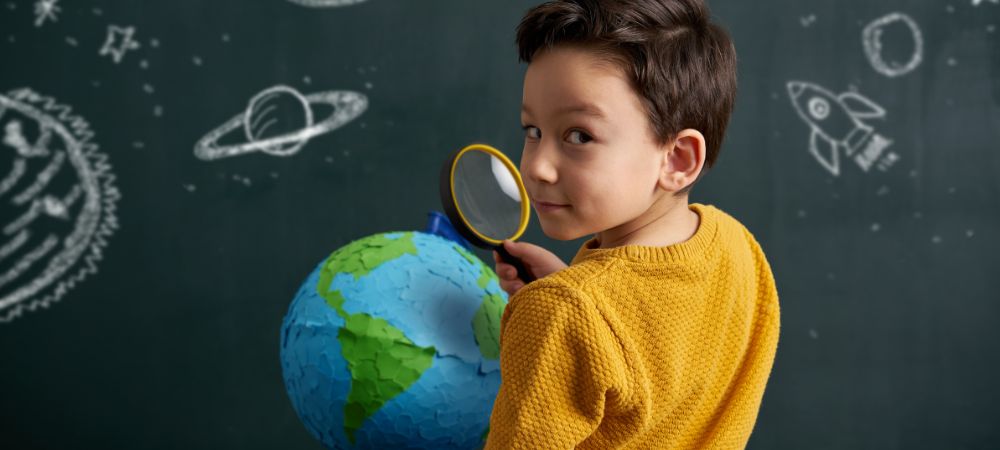

Effective teaching methods play a crucial role in education, ain't that right? Access more information view this. extra details accessible check out below. It's important for educators to use various strategies to engage students and enhance their learning experience. Without effective teaching methods, students may struggle to understand complex concepts and fail to reach their full potential.
One reason why effective teaching methods are so important is because they can cater to different learning styles. For example, some students learn best through hands-on activities, while others prefer visual aids or auditory explanations. By using a variety of teaching techniques, educators can ensure that all students have the opportunity to grasp the material and succeed in their studies.
Furthermore, effective teaching methods can help create a positive classroom environment where students feel motivated and engaged. When teachers use interactive activities, group discussions, and real-world examples, students are more likely to stay focused and participate actively in class. This not only improves their understanding of the subject matter but also fosters a sense of community and collaboration among classmates.
In conclusion, it's clear that effective teaching methods are essential for promoting student success and enhancing the overall quality of education. Educators must continuously strive to improve their teaching strategies in order to meet the diverse needs of their students and create a dynamic learning environment. So next time you're in the classroom, remember the importance of using innovative and engaging teaching methods for your students' benefit!
So, when it comes to traditional teaching methods for topic Teaching methods, there are some different approaches that have been used over the years. These methods can be really effective in helping students learn and retain information. But, they don't always work for every student or every subject. It's important to keep in mind that these methods aren't perfect and may need to be adapted or combined with more modern techniques.
One of the most common traditional teaching methods is lecture-based instruction. This involves the teacher standing at the front of the classroom and talking to the students about a particular topic. While this can be a good way to introduce new information, it can also be boring and not very engaging for students.
Another traditional method is rote memorization, where students are asked to repeat information over and over again until they remember it. This can be effective for certain subjects, like math or vocabulary, but it doesn't always help students understand the material on a deeper level.
added details readily available view it.
Some other traditional teaching methods include group work, where students collaborate on projects or assignments together, and hands-on activities, where students learn by doing rather than just listening. These methods can be really effective in helping students engage with the material and apply what they've learned in real-world situations.
Overall, traditional teaching methods can be useful tools for educators, but they're not always the best fit for every student or every subject. It's important to mix things up and try different approaches to see what works best for your class. And remember, no one method is going to work perfectly all the time – it's all about finding what works best for you and your students!
Finland's education system is renowned for having no standardized examinations throughout a child's primary institution years, focusing rather on all natural advancement.
Around the world, over 260 million youngsters and young people were out of college since 2018, underlining consistent challenges in global education gain access to.
In Old Greece, education was extremely valued with methods that included discussions, discussions, and lectures, which are still significant today.
Brazil has actually carried out a regulation requiring that schools teach trainees regarding Afro-Brazilian background, intending to supply a much more comprehensive educational program.
Technology plays a crucial role in modern education, there's no doubt about it.. It has revolutionized the way we learn and teach, making the process more interactive and engaging.

Posted by on 2024-05-02
Standardized testing, like, plays a big role in holding schools and educators accountable, you know?. It helps to measure students' knowledge and skills in a consistent way across different schools and districts.

Posted by on 2024-05-02
Parental involvement in schools and at home, it can have a big impact on student success in education.. When parents are involved with their child's schooling, they can help to motivate them and support them in their learning journey.

Posted by on 2024-05-02
So, let's talk about the importance of lifelong learning in staying relevant and adaptable.. Education is not just something you do when you're young and in school - it's a journey that lasts your whole life.

Posted by on 2024-05-02
In today's fast-paced world, it's important to keep up with the latest developments in your field.. By continuously updating your skills and knowledge through lifelong learning, you can ensure that you stay competitive in the job market.

Posted by on 2024-05-02
Modern and innovative teaching techniques have really changed the way we approach education. They are making learning more engaging and interactive, don't you think? Instead of just sitting in a classroom and listening to a lecture, students now have the opportunity to participate in hands-on activities, group projects, and even virtual reality simulations. These methods help to keep students interested and motivated, wouldn't you agree?
One of the most popular modern teaching techniques is flipped classroom. In this model, students watch lectures or read material at home and then come to class prepared to discuss and apply what they have learned. This allows for more personalized instruction and gives students the chance to work at their own pace. It's such a great way to encourage independent learning!
Another innovative approach is gamification, which involves incorporating game elements into lessons to make them more fun and engaging. By adding elements like points, badges, and leaderboards, teachers can motivate students to stay focused and compete with one another in a friendly way. It's amazing how something as simple as turning a lesson into a game can completely transform the learning experience!
Overall, modern teaching techniques are revolutionizing education by making it more dynamic and student-centered. They are helping teachers connect with their students on a deeper level and inspiring them to take an active role in their own learning journey. Don't you just love how these new methods are shaping the future of education?

Incorporating various teaching methods in the classroom can have many benefits. It helps to keep students engaged and interested in the material being taught. By using a mix of lectures, group activities, and hands-on projects, teachers can cater to different learning styles and preferences. This can lead to improved understanding and retention of information.
Not using only one teaching method all the time can prevent boredom and monotony in the classroom. Students are more likely to stay focused and attentive when they are presented with a variety of approaches to learning. Additionally, incorporating different methods can help students develop critical thinking skills as they are challenged to approach topics from multiple perspectives.
Furthermore, mixing up teaching methods can also help teachers identify which strategies work best for their students. By trying out different techniques, educators can gather valuable feedback on what resonates most with their class. This information can then be used to tailor future lessons for optimal effectiveness.
In conclusion, incorporating various teaching methods in the classroom is essential for creating a dynamic and engaging learning environment. By diversifying instructional strategies, educators can enhance student learning outcomes and foster a more interactive educational experience for everyone involved!
When choosing appropriate teaching methods for a topic, there are several factors to consider. Firstly, it's important to think about the learning styles of your students. Not all learners will respond well to the same methods, so it's crucial to vary your approach.
Another factor to take into account is the complexity of the subject matter. If you're teaching a difficult concept, you may need to use more hands-on activities or visual aids to help students understand.
Additionally, consider the size of your class. Larger groups may benefit from group work and interactive discussions, while smaller classes might benefit from more one-on-one instruction.
Lastly, don't forget about resources available to you. Utilize technology such as smartboards or online resources to enhance your teaching methods and engage students in new ways.
In conclusion, when choosing appropriate teaching methods for a topic, be sure to consider your students' learning styles, the complexity of the subject matter, class size, and available resources. By taking these factors into account, you can create a dynamic and engaging learning environment for your students.

Implementing different teaching strategies can be a real challenge for educators. There are many obstacles that they have to overcome in order to effectively use various teaching methods. One of the biggest difficulties is lack of resources, such as time and materials. Without these things, it's hard for teachers to try out new approaches in the classroom.
Another problem is resistance from students. They may not be open to change or may not understand why a different method is being used. This can make it tough for educators to get their message across and engage their students in learning.
Furthermore, there are often restrictions imposed by school administrations or standardized testing requirements that limit the freedom of teachers to experiment with different techniques. This can be frustrating for educators who want to innovate and improve their teaching practices.
Despite these challenges, however, many educators are passionate about finding creative ways to reach their students and help them succeed. By staying positive and persevering through the obstacles, they can make a real difference in the lives of their students.
In conclusion, while implementing different teaching strategies may come with its fair share of difficulties, it's ultimately worth it for educators who are dedicated to providing the best education possible for their students.